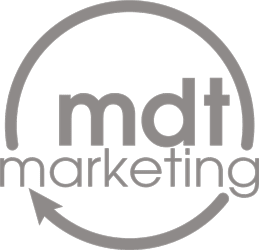What you need to know before sending your design to print.
Frustrations can mount when a project is being sent back and forth between your designer and the printer. Your stress level can rise even further as the back and forth eats into the deadline for production or the printer has to make changes to your file causing additional charges. Knowing how to properly prepare your file for the printer controls costs, eliminates delays, and ensures you have compelling visual prints for your marketing campaigns.
Here is what you should know before the file goes to print.
PDF Formatting:
PDF is the preferred file type for most printers. A PDF helps prevent any conversion hiccups when opened on their end but always check with your printer to get the specs they require.
To get started ask about:
- PDF file type (yes there are several)
- Marks & Bleeds
- Format: spreads or pages
If you are outsourcing the design, relay any directions given by the printer and be sure to request a PDF instead of the native file. While the printer can convert the native file to PDF for you, it may mean a second review and proof to be sure nothing shifted during conversion.
Bleed:
The bleed is the artwork or background colors that extend beyond the intended margin that allows for any small shift or paper movement during printing.
The preferred bleed is 1/8 of an inch, but again, always check with your printer to see what they require for the style of your design. The printers are more than happy to inform you on how far from the edge you are allowed to take any text or image that should not go into the bleed. Confirmation from the printer on bleed and margins will avoid important information or images from getting cut off when the finished product is trimmed.
Fonts:
A missing font, is the number one cause of having a file print incorrectly.
The font should be embedded in the file or packaged with it.
Sending the printer a PDF file helps eliminate issues that can arise from forgetting to embed the font. For example, if the font isn’t properly embedded, a substitute font may be used affecting the spacing between characters or cause lines to break in odd places.
Images:
Low resolution images or images that are not embedded/packaged with a the design can quickly wreck the overall appearance of your printed piece. You could have great content, artwork, and layout, only to have it ruined by a fuzzy image.
300 dpi it the benchmark for resolution, which provides a crisp, clean image in printing.
Layout:
- Screen vs Print: What looks good on a computer screen may not directly translate to the printed piece. Whether it’s artwork that crosses over a spread, page numbers, or how a brochure will be folded, rely on measurements instead of eyeballing it.
- Utilize the feature within the design software to keep things like lines or other design elements consistent throughout the entire piece. Something as simple as page numbers that vary slightly from one page to the next can quickly sully the professional impression you’re going for.
- Folded Pieces: For a folded piece, such as a tri-fold brochure, talk to your printer to see what the individual panel sizes need to be. A common misconception is that a trifold is simply an 11 x 8.5 sheet divided into three equal panels. However, printers use a short fold so the piece lays flat. Get the specs for a short fold BEFORE designing, which will save you time, money, and disappointment.
- Booklet Type: The number of pages depends on the type of binding needed for the booklet.
- Saddle stitch (pages are stapled in the center): the page count must be divisible by 4. This is called a signature.
- Perfect binding: the page count must be divisible by 2.
- Your printer can assist you with the specs and many provide templates that includes proper placement of inside cover space.
As with any design project, good communication is critical, and that goes for your printer too. The more questions you ask before delivering the file, the less chance you’ll have of additional charges for revisions and corrections.
Start resonating with your audience from their mailboxes.
MDT Marketing‘s extensive knowledge of variable data printing and personalized marketing comes from years of having a print production in house. Contact us today for more details on creating compelling marketing materials that you can mail to your inquiries.
